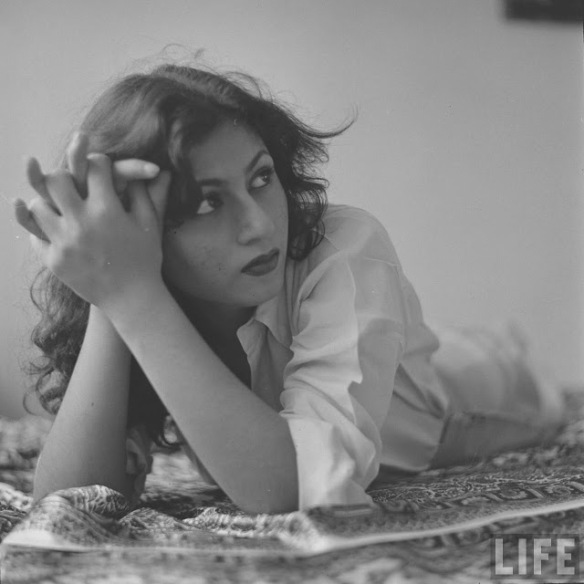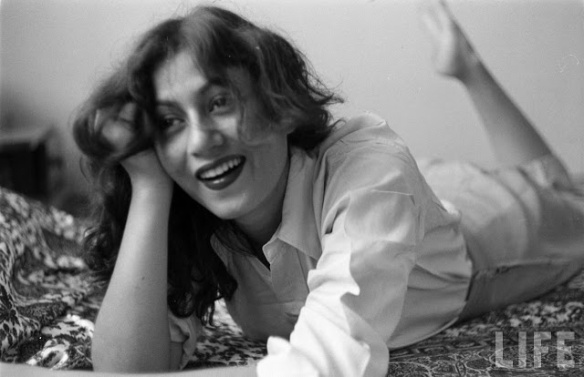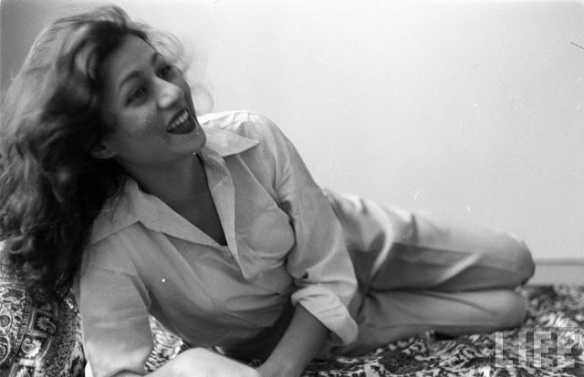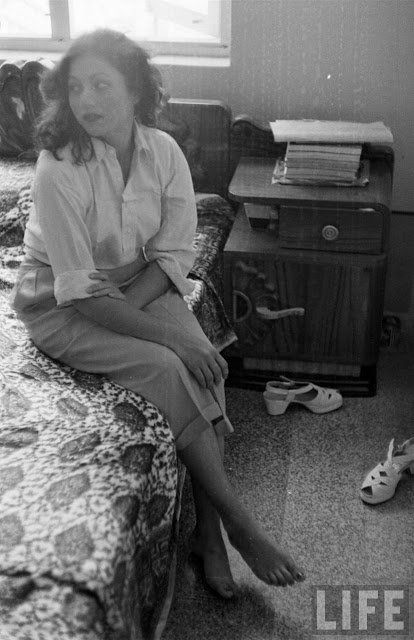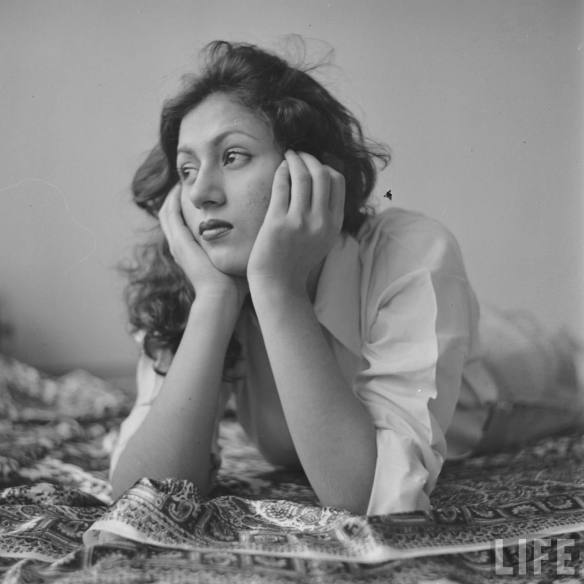Madhubala was born Mumtaz Jahan Nehlavi on Valentine’s Day, February 14, 1933. Perhaps was no coincidence with such a birthday that Madhubala would grow up to become one of the most beloved romantic heroines of India. But her life could not share the happy endings of many of her films. This month, Madhubala would have turned 80 years old. Her premature death has likened Madhubala to iconic Hollywood greats like Marilyn Monroe, Judy Garland, Carol Lombard and even Bollywood’s own Meena Kumari–women of the silver screen who died before the world was ready.
Madhubala’s unique allure was known worldwide–she had been featured in many American magazines including LIFE magazine whose rare photographs are featured in this post. Legendary director Frank Capra was eager to bring the mysterious Indian beauty to Hollywood and launch an international career–but his efforts were halted quickly by Madhubala’s conservative father. She was sought after by every great Bollywood director and actor from Dilip Kumar to Dev Anand and even romanced and married playback singer Kishore Kumar at the height of her illustrious career. For years, Madhubala was the Queen of Bollywood and the hearts of millions.
But what killed Madhubala, ending her short-lived reign? Could it have been prevented?
When Madhubala was born to a traditional Muslim family in Delhi, her elder sister Madhur Bhushan recalled that the baby was “blue”–a serious sign of cyanosis and poor oxygen perfusion. Madhubala had a Ventricular Septal Defect (VSD), a disorder colloquially referred to as a “hole in the heart.” A congenital abnormality of that kind allowed for mixing of both normal oxygenated blood and deoxygenated blood to be shunted through her body–an unhealthy adulteration with a bad prognosis. While a somewhat common birth defect (1 in 500 babies are born with a VSD), the medical community’s understanding of the condition was in its infancy–VSD had first been described in 1879 and at the time of Madhubala birth, there was no treatment. Yet Madhubala continued to grow into a vivacious and beautiful young woman whose fragility was for many years known only to a few.
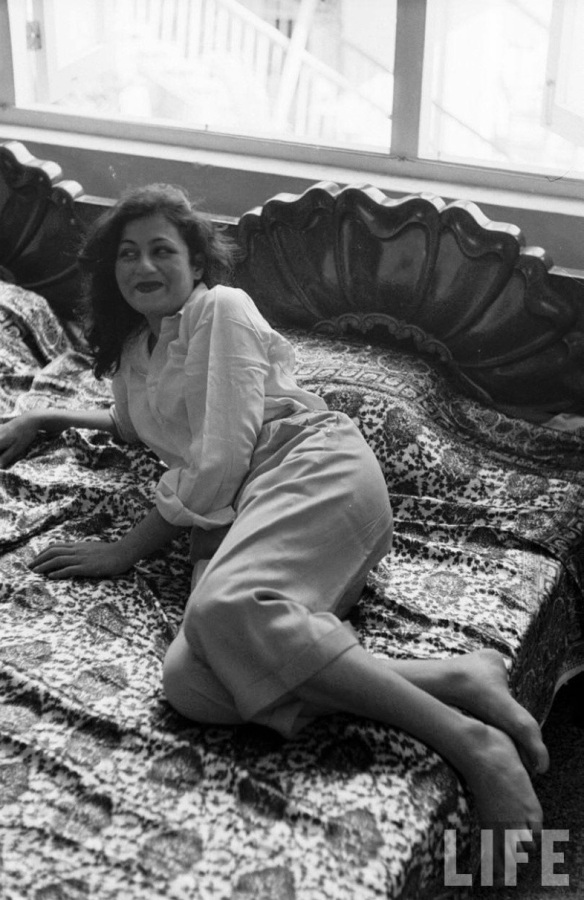
Indian superstar Madhubala was sought by directors across the country and internationally during the height of her career.
The young beauty shot to fame in 1949 at the age of 16 in Kamal Amrohi’s Mahal with Bollywood veteran Ashok Kumar. One success followed another, establishing Madhubala as an A-grade star with a rare versatility and ebullience that hid her growing fatigue and weakness. In was not until filming scenes for Bahut Din Hue in 1954, Madhubala vomited blood on the set. It was an ominous sign that electrified the Indian media. The history of her heart defect came to public light as the mid-1950s brought her a string of failures, earning her the label “box office poison.” With skyrocketing notoriety, no longer was Madhubala’s illness a family secret.
Little did her family know, in the same year on the other side of the world at the University of Minnesota, Dr. Walt Lillehei was about to make medical history. After years of research in the field, on the morning of March 26, 1954, Lillehei performed the first surgical closure on a child with VSD. The surgery was a success that brought hope to thousands of families whose children were otherwise not expected to live past their 30th birthday.
Meanwhile in Bombay, Madhubala’s career revived and reached dazzling heights with smash hits like Chalti Ka Naam Gaadi (1958), Barsaat Ki Raat (1960) and the pinnacle of her career, Mughal-e Azam (1961). However, as Madhubala neared her 30th birthday, the grueling filming of historical epic Mughal-e Azam was to take a toll on the young actress’ health that is speculated to have hurried her demise.
During the filming of the famous song, “Bekas Pe Karam Kijiye,” Madhubala’s performance turned art into life. The scene was of defiant courtesan Anarkali chained in the palace prison, singing for mercy. Director K. Asif actually made Madhubala perform in heavy, burdensome metal chains that weighed the actress down and cut into her skin. Her exhaustion and despair that you can see in the song are real–for a patient with VSD, such an amount of physical exertion truly mimicked the torture of her Mughal character. It became clear that her only hope lay in the the rumors of a surgical cure with the techniques recently pioneered by Dr. Lillehei.
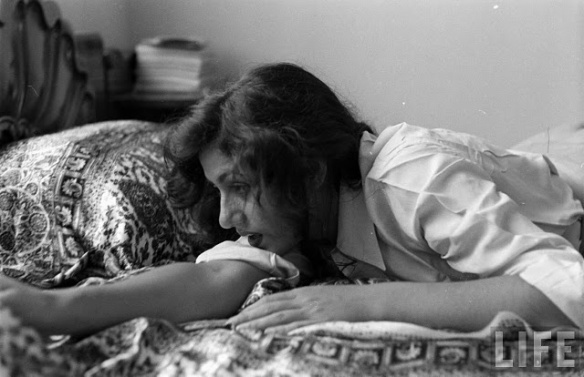
Bollywood Actress Madhubala was most remembered for her roles in Mahal (1949), Mughal-e Azam (1960), and Barsaat Ki Raat (1960).
In 1960, the actress sought treatment in London, but physicians refused to operate. Although Lillehei’s surgery had worked in children, physicians across the West had not perfected the technique in adults, and the first heart transplant in a human adult would not be performed for 7 more years. It was with a heavy spirit that Madhubala returned home to Bombay where she realized her career as an actress was over. She sought instead to enter film as a director, setting the stage to make tremendous strides for women in her directorial debut of the film Farz Aur Ishq. However, while the project was still in pre-production, Madhubala–the immortal woman with a mischievous smile and a mystical aura–succumbed to her illness at the age of 36. Tragically, within a few short years of her death, operations that closed VSDs were made widely available to adults. The history of heart surgery and Madhubala’s life crossed paths at a critical corner, but for a matter of time, never made that life-saving collision.
Perhaps if Madhubala had been born just a few years later or if Dr. Lillehei had begun his famous experiments just a few years earlier, Madhubala would have lived to see a surgery that would have allowed her to celebrate her 80th birthday today with us. Perhaps it was Madhubala’s early death itself that has immortalized her as a forever beautiful, forever carefree young woman who will remain always elusive. That ethereal woman haunting the mansion of Mahal (1949) or glittering in jewels of Mughal-e Azam (1961) is now only a shadow in our memories who vanished before time could transform her. In the words of her famous character from Mahal in which she starred at the age of 16:
“Mai.N vehm nahii.N hoo.N, haqeeqat.” [“I am not an apparition, I am reality.”]
For fans of Madhubala all over, her words proved true only for a short while.
– Mrs. 55

